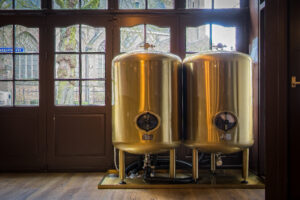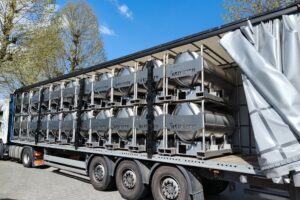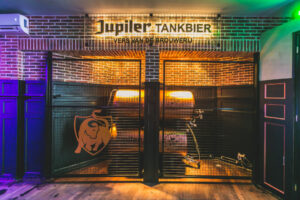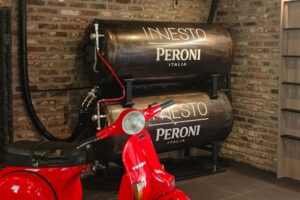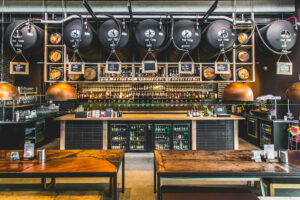As a brewer, you want to make sure your customers get the optimum experience when they order your beer in a bar.
In our newest blog post, we will look at the differences between single-wall and double-wall beer tanks. Each of these types has their own strengths and benefits and situations in which it can best utilize these benefits.
Understanding Pressure Vessels in Tank Beer Systems
In tank beer systems, beer is stored in a specialized container known as a pressure vessel. These tanks work in combination with an inliner and use compressed air to push the beer out. Because of the pressure involved, the tank must be built to safely withstand these conditions—hence, it’s designed as a pressure vessel.
Duotank beer tanks, for example, are engineered to handle up to 4.3 bar of pressure. To achieve this level of durability, the tanks are constructed entirely from stainless steel. The front and back ends are welded to a central steel sleeve, forming a robust, single-walled pressure vessel.
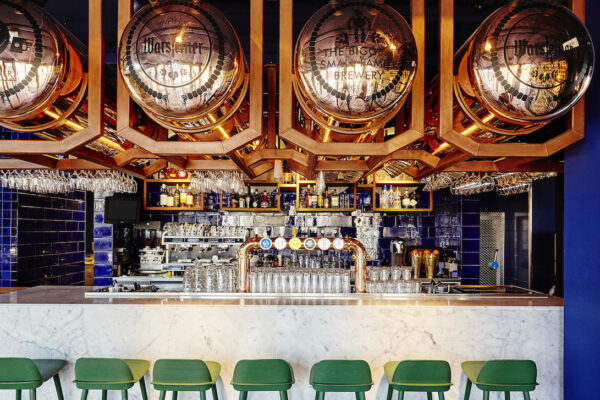
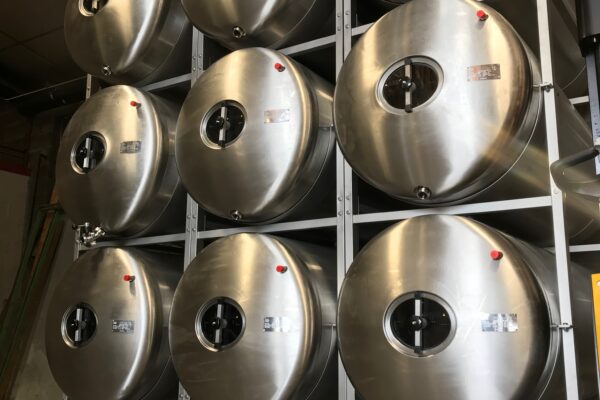
Single-Walled (Non-Insulated) Tanks
At its core, this basic construction results in a single-walled tank. These tanks are fully functional when used with an inliner but don’t include any insulation or built-in cooling. To keep the beer fresh and cold, single-walled tanks must be placed inside a cold room. This setup is ideal for bars that already have a refrigerated space in place.
Such set-ups are also more common in venues that have large beer turnover, such as stadiums or event locations. As these venues use more centralized beer storage, a cold room is often the most efficient way to do so. An added benefit is that the same cold room can also store additional kegs (for special beer types) and soft drinks.
Double-Walled (Insulated) Tanks
To turn a single-walled tank into a fully insulated one, an extra layer is added. This includes a copper cooling coil mounted directly onto the tank to maximize cooling efficiency. Over this, a second outer shell—usually also made of stainless steel—is fitted. Between the inner and outer layers, about 4 cm of insulation foam is injected.
The result? A highly insulated double-walled tank that keeps beer cold and fresh, no matter the environment. With built-in insulation and cooling, these tanks are perfect for setups that don’t have a cold room. This means the tanks have more options for placement. For example, the tanks can be used as a centrepiece in a bar interion and really showcase a beer brand.
Want to know more please contact us.
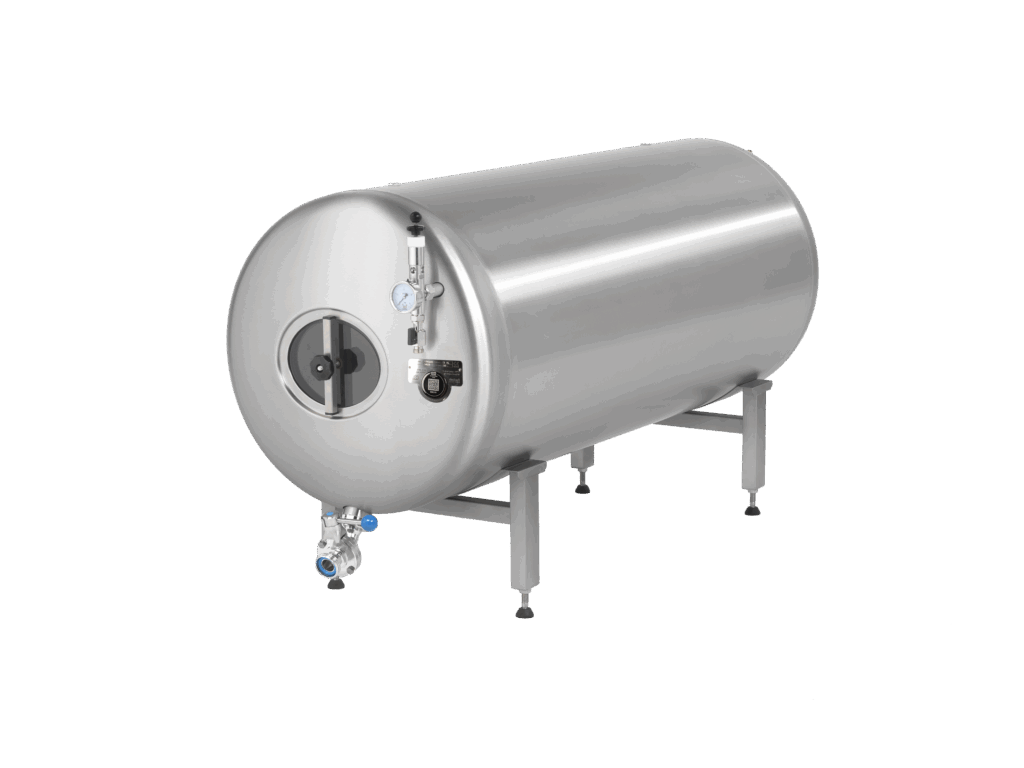
Recent articles
Blog: How a Tank Beer System Works
As a brewer, you want to make sure your customers get the optimum experience when they order your beer in a bar.
Smarter beer transport starts here
As a brewer, you want to make sure your customers get the optimum experience when they order your beer in a bar.
Preview: Duotank at Drinktec 2025
As a brewer, you want to make sure your customers get the optimum experience when they order your beer in a bar.
Blog: Why Beer Tanks Are a Game-Changer for Events
As a brewer, you want to make sure your customers get the optimum experience when they order your beer in a bar.
Combined Tankbeer Transport: Efficiency, Sustainability and Innovation in One
As a brewer, you want to make sure your customers get the optimum experience when they order your beer in a bar.
Blog: Why Tankbeer Systems Are the Sustainable Choice for Breweries
As a brewer, you want to make sure your customers get the optimum experience when they order your beer in a bar.
Blog: Filling your beer tank; the do’s and don’ts
As a brewer, you want to make sure your customers get the optimum experience when they order your beer in a bar.
Blog: your first tankbeer installation and how Duotank will help you
As a brewer, you want to make sure your customers get the optimum experience when they order your beer in a bar.
Blog: tankbeer systems for stadiums and concert halls
As a brewer, you want to make sure your customers get the optimum experience when they order your beer in a bar.


